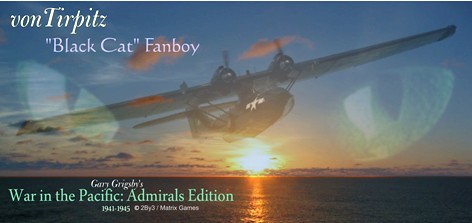ORIGINAL: mike scholl 1
You've said several times now that the only reason for the effectiveness of Japanese ASW is incompetent play by the Allied player. Perhaps you would enlighten the rest of us as to how a competent Allied player deploys his subs.
I've sunk about 825 Jap ships with Mk XIV torpedoes in three years of play..., which I thought was pretty good. But I'm always willing to learn from my betters...
I never said the ONLY reason for anything. Your attempt to put words in my mouth is rather annoying and quite disingenuous.
The original question, which the comments were devised to answer, had to do with the complaint of some people that they were losing more US subs late war than IRL, and the proposition that the number of launchers on late war Japanese E-type vessels was the culprit. The comments indicated:
1) The number of launchers is not a prime factor – too many other factors (code and data) overcome this simple numeric;
2) Loss rates are “relative” within the system, so losing more than one thinks one should implys the other side also loses more than it should, on a relative proportional basis; and
3) There are many gameplay deployment options that minimize or maximize losses, regardless of what the code or data might indicate. The game defines ‘system’. It is not there to force IRL results on a players choices, no matter what they are.
If one wishes enlightenment, one might try a few years in Tibet, or a Yaqui Guia. Otherwise, a simple approach might be to consider:
Density of subs is directly proportional to probability of detection;
Proximity of subs is directly proportional to probability of detection;
Density of subs, and magic code, is directly proportional to probability of acquisition;
Density of ASW TF, and magic code, is directly proportional to probability of prosecution;
Pay a certain degree of attention to the diving depth of subs vs the fall depth (range) of late war DCs.










